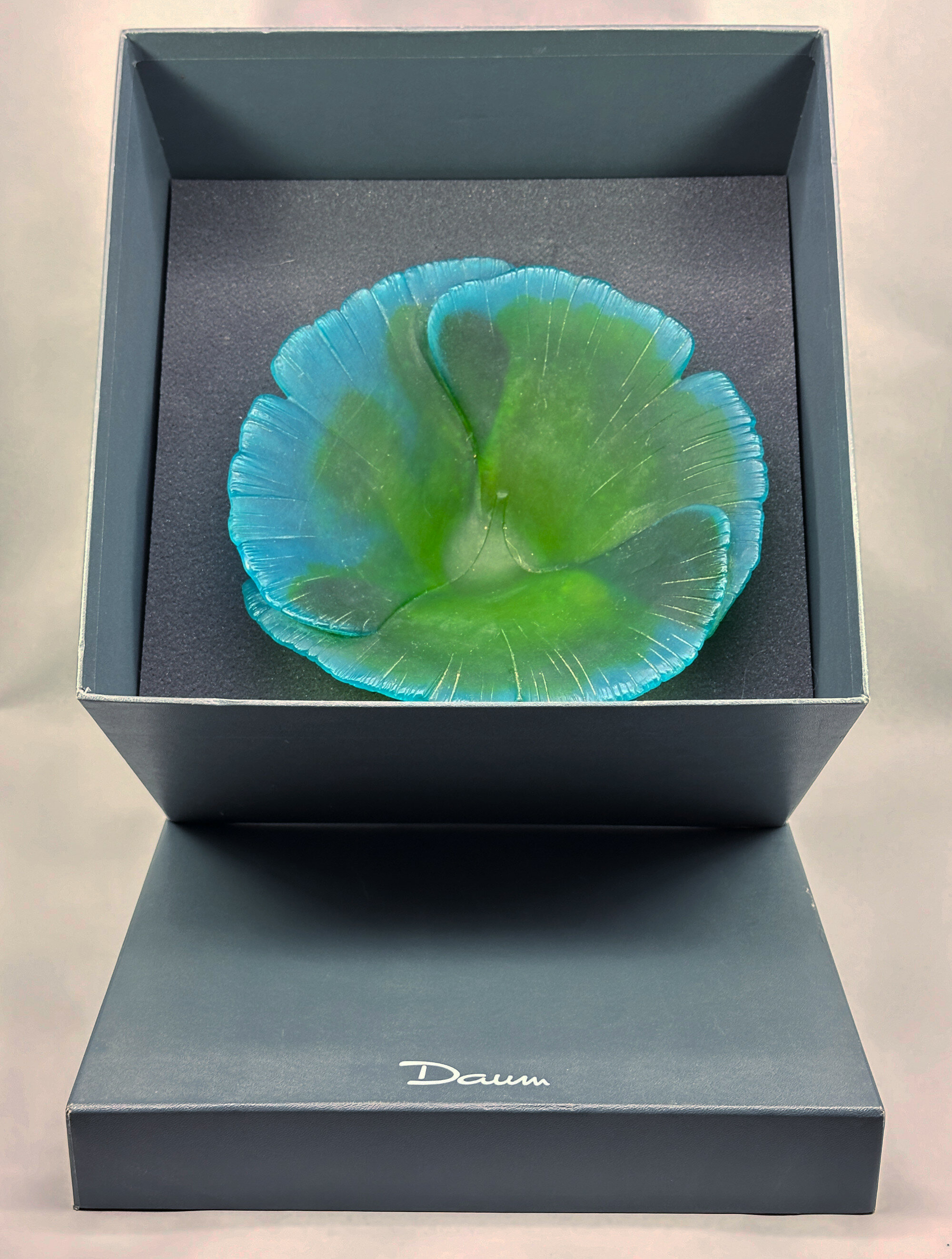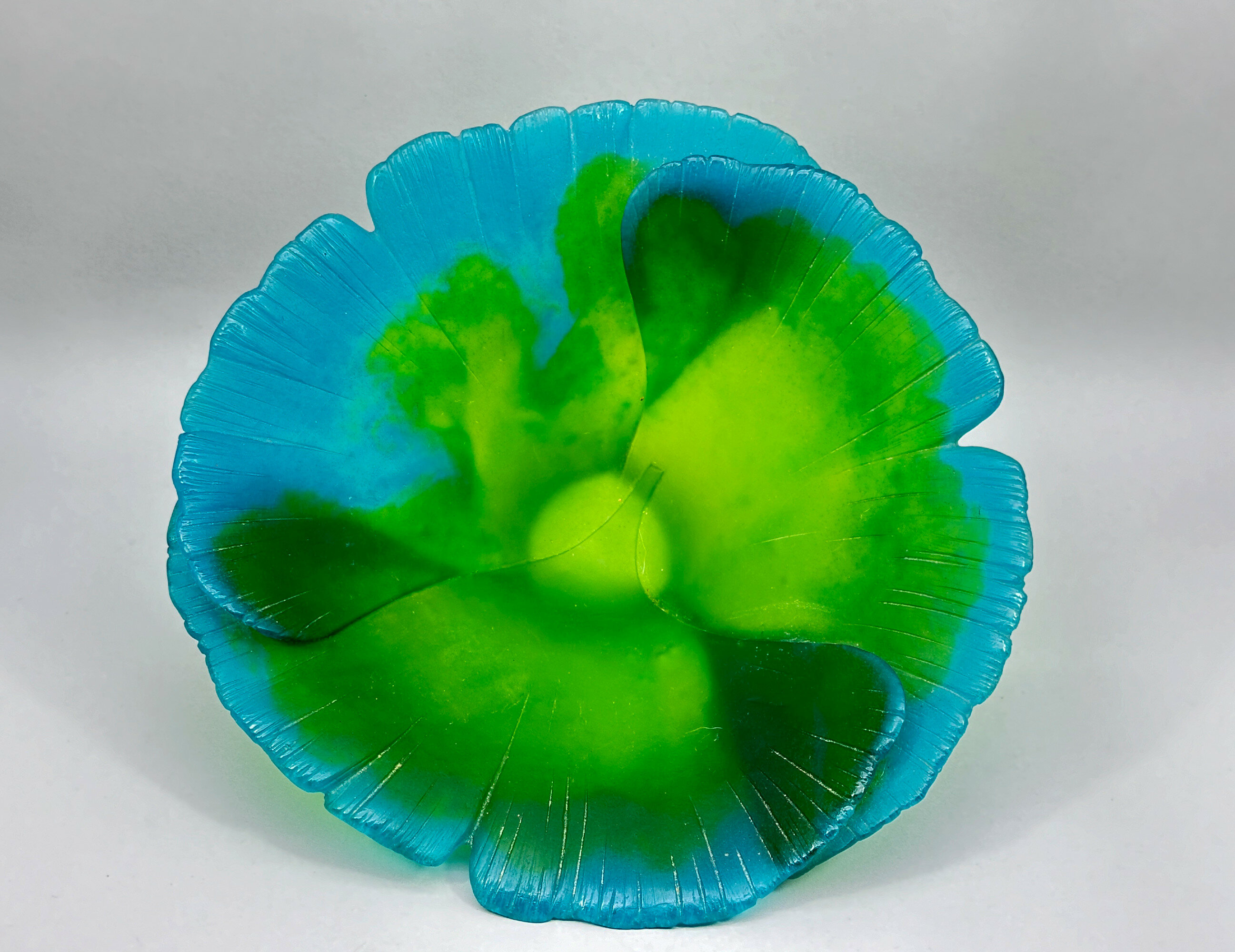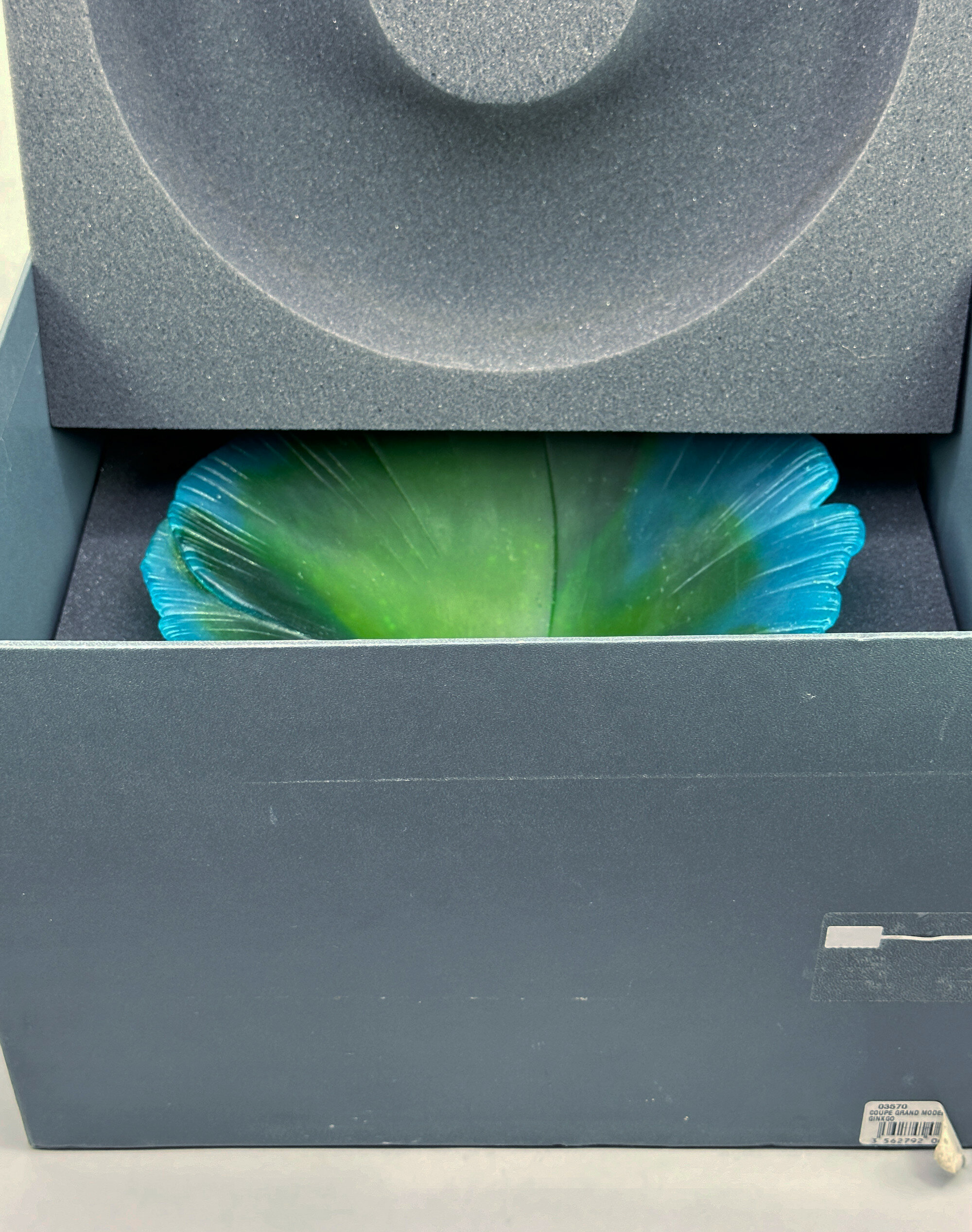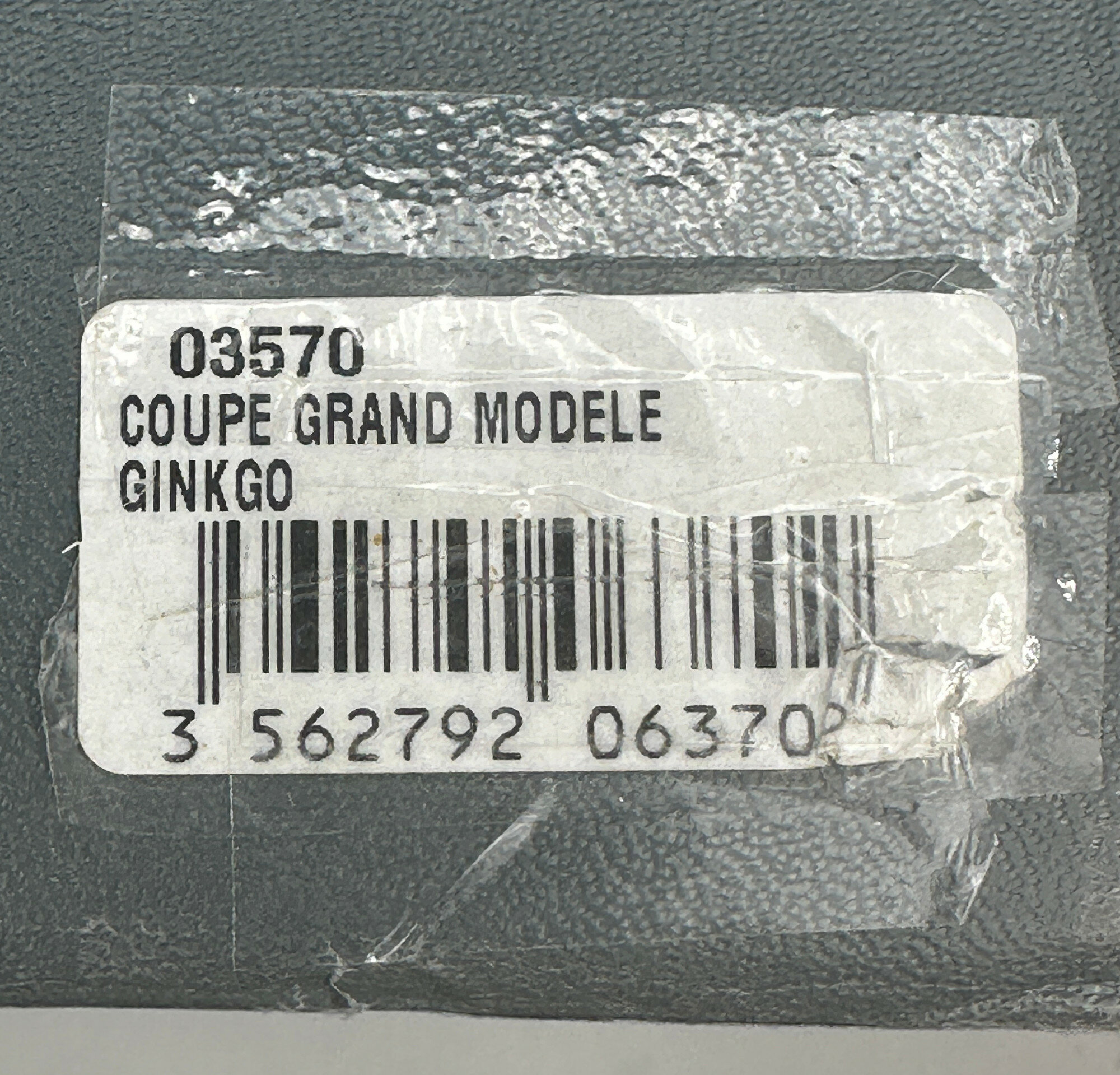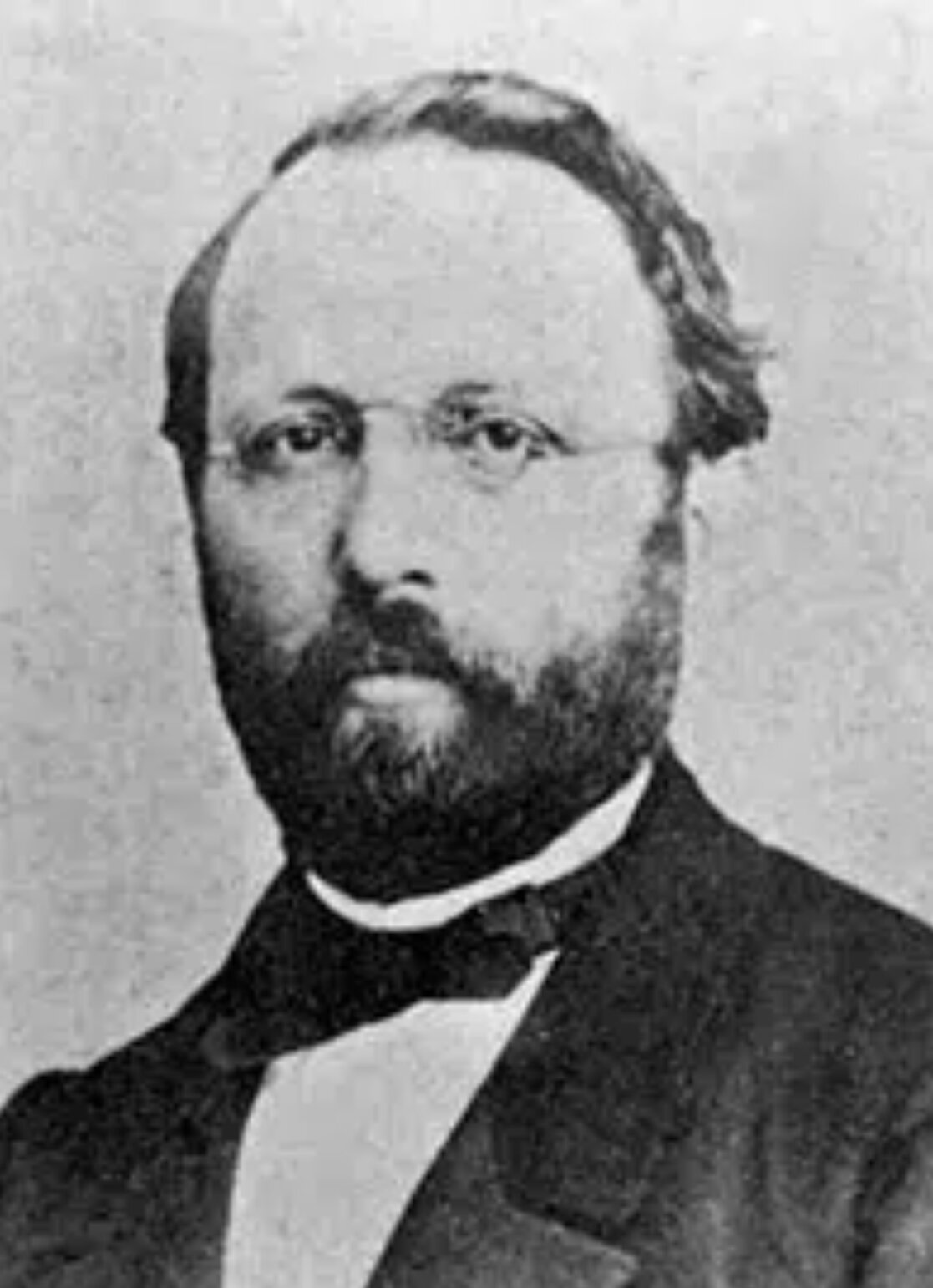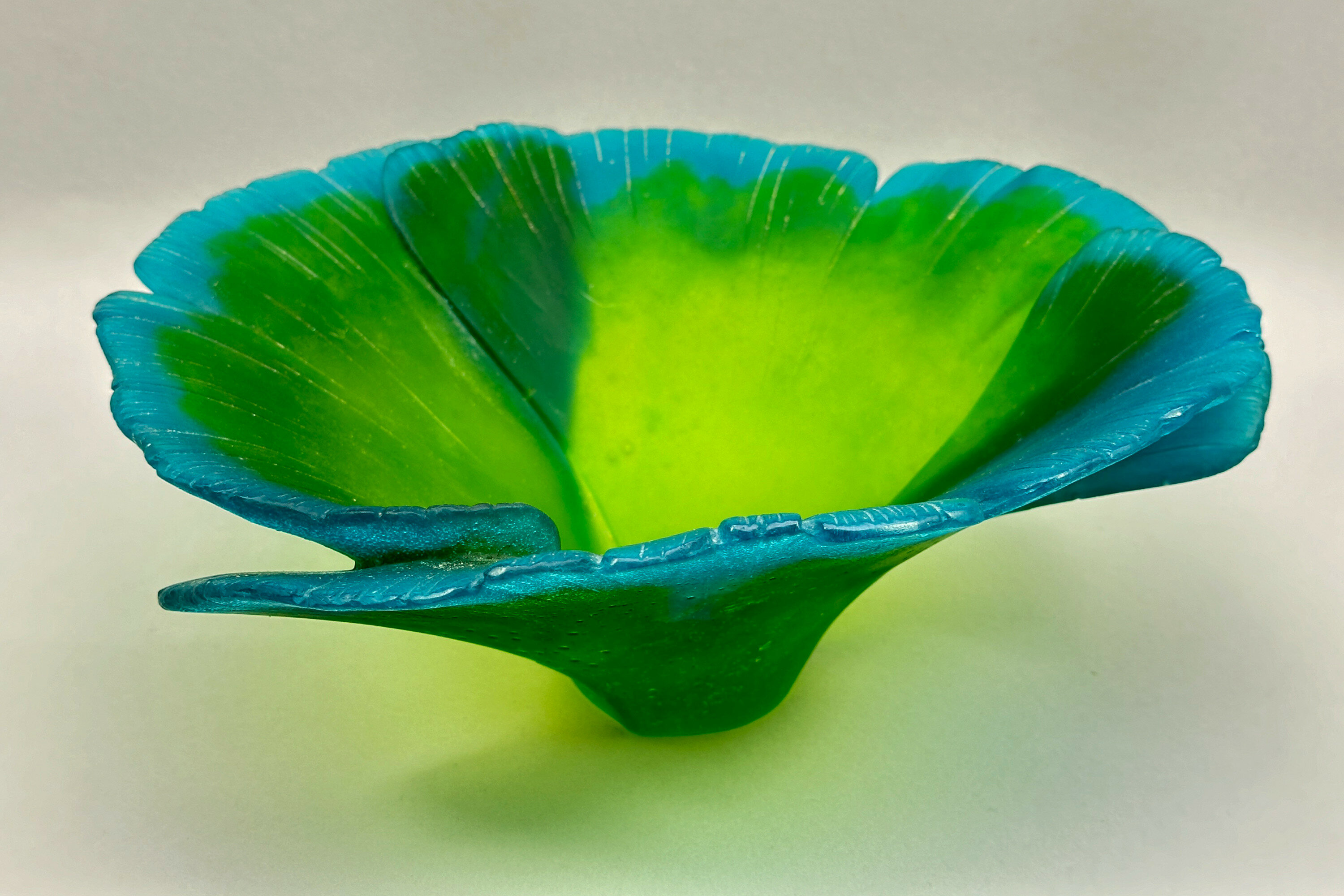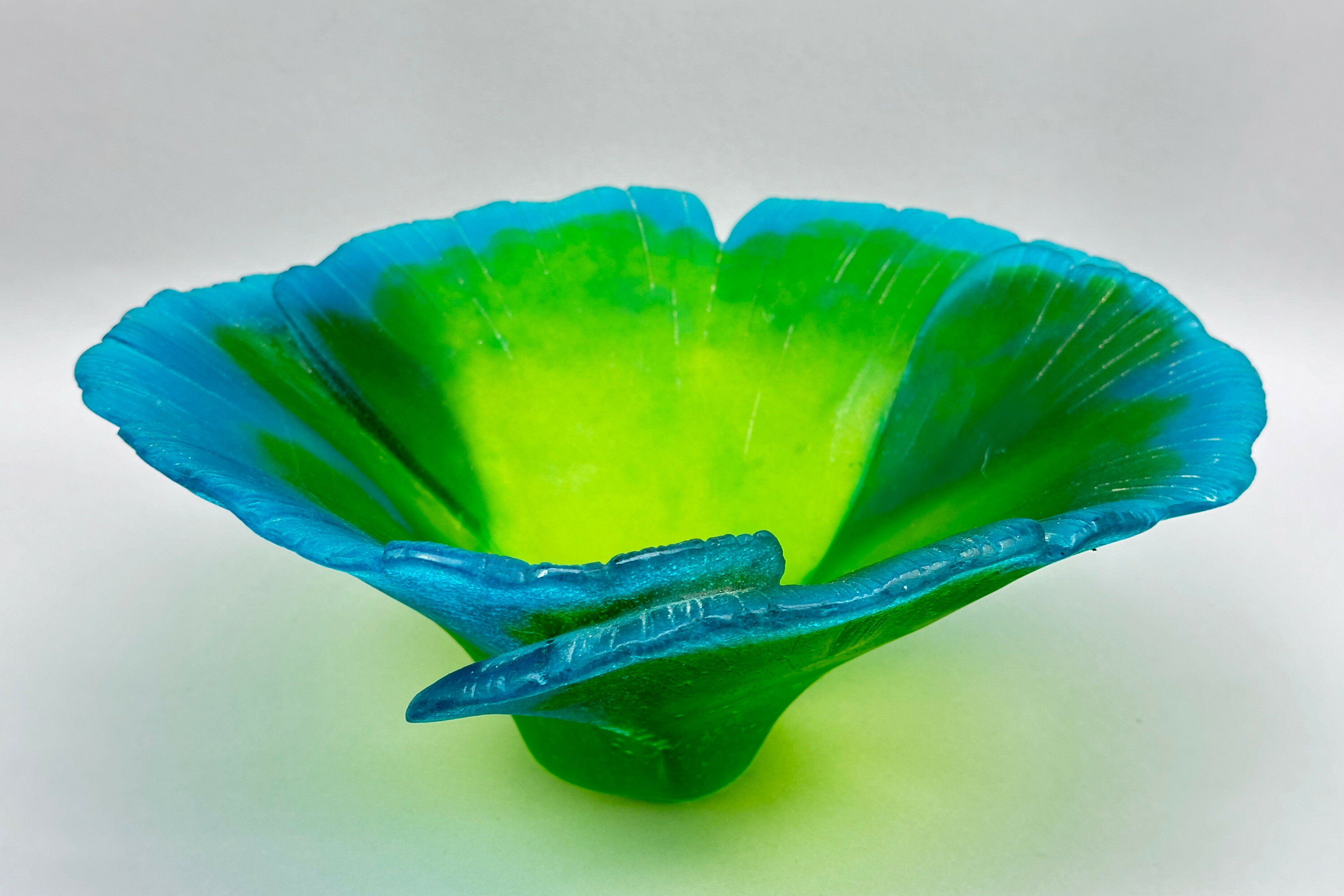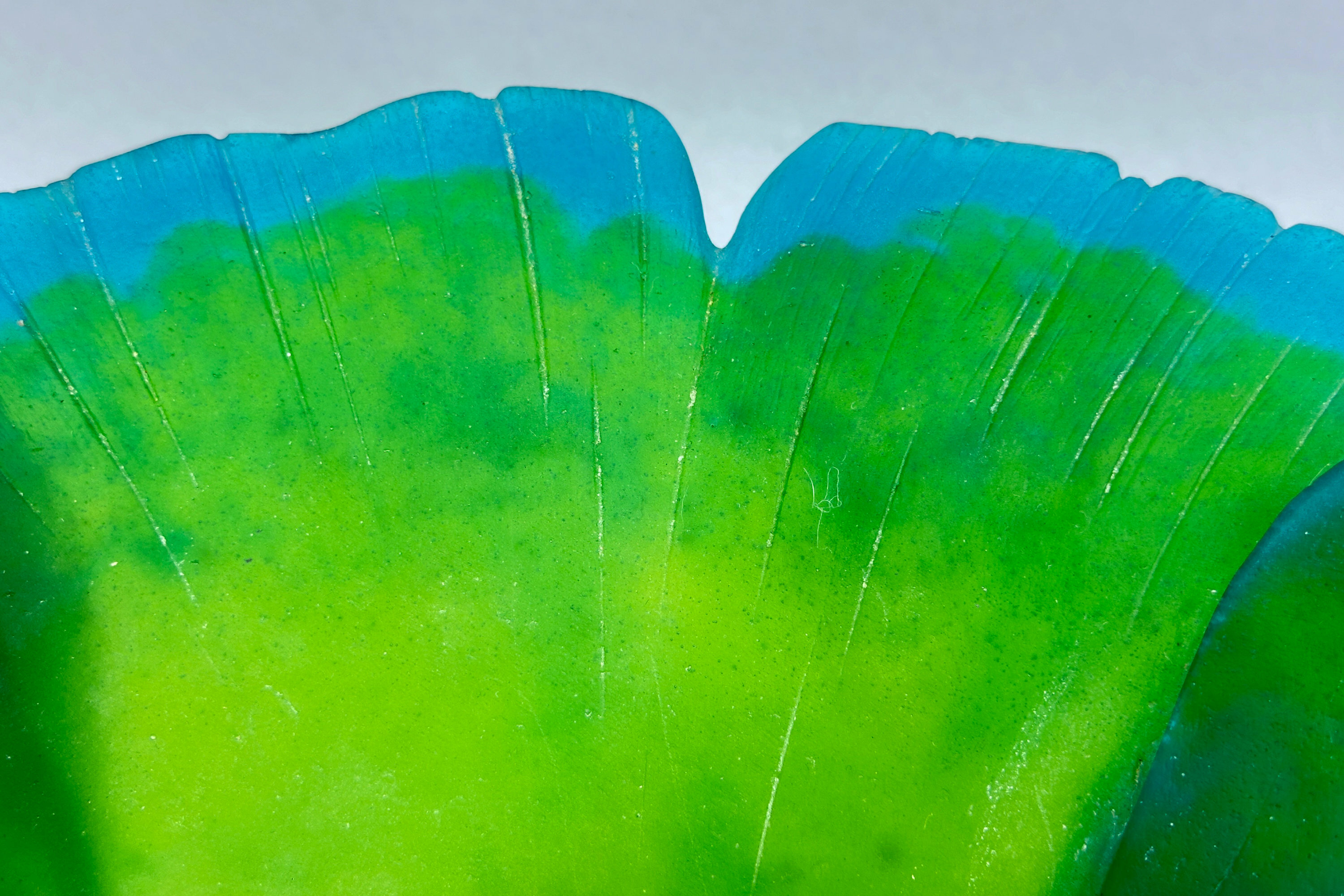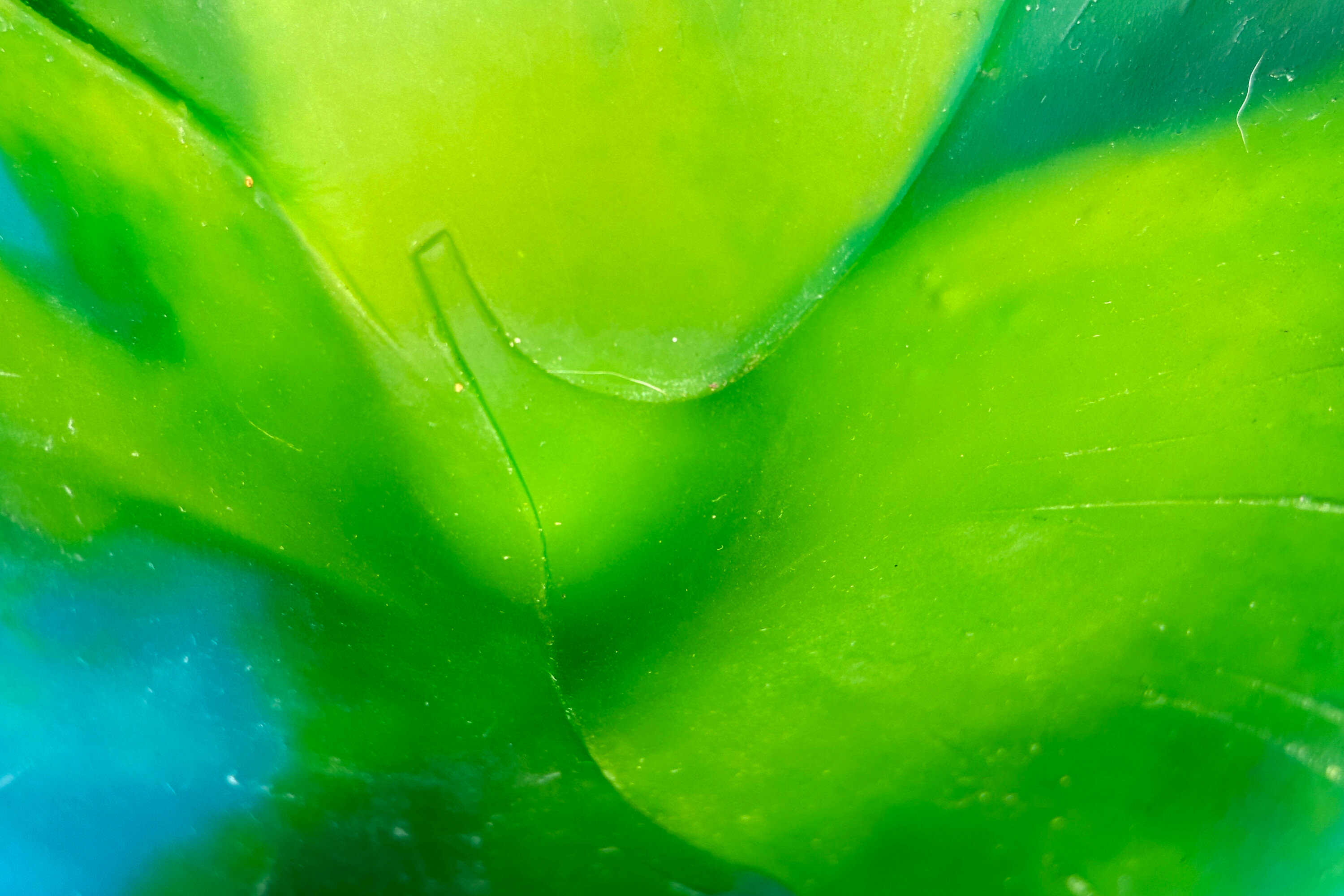Daum Bowl, Ginkgo, Coupe Grande Verte model no 03570, late C20th
| Current Bid: | £500.00 |
| Bid Increment: | £50.00 |
| Next Min Bid: | £550.00 |
| Buyer’s Premium: | £120.00 |
| Total Amount: | £620.00 |
| Number of Bids: | 10 |
| Location: | United Kingdom |
| Highest Bidder: | User 1223 |
| Auction Start: | 09/08/24 01:40:00 UTC |
| Auction Ending: | 16/08/24 19:00:00 UTC |
| Auction Finished : | 16/08/24 19:00:02 UTC |
Daum Bowl, Ginkgo, Coupe Grande Verte model no 03570, late C20th
Founded in 1878, the Daum crystal glass studio based in Nancy, rapidly became synoymous with the highest quality art glass produced in France during the late nineteenth and twentieth centuries. Always abreast of contemporary fashion, Daum reintroduced the Egyptian derived ‘pâte de verre’ technique in the early 1900s and continued to produce it in the years that followed. The ‘Ginkgo’ range, named after the distinctive leaves of the Ginkgo plant, was introduced in the late 1960s with a wide variety of forms produced in the colourings of green and blue and amber crystal glass. This bowl is an outstanding example, signed, in mint condition and with its original fitted box. A highly desirable acquistion for lovers of Daum and all collectors of French art glass.…………………………………………………………………………………………………….....................................................................................
Jean Daum (1825-1885) was a notary in the town of Bitche in Alsace-Lorraine (see image 14). Following the annexation of this region to the German Empire in the 1870s he sold his business and moved, along with many of his contemporaries, to Nancy where he found himself financing a local glass firm, Sainte-Catherine, which went into difficulties and near bankruptcy. Knowing little or nothing about glass making himself he bought the ailing business in 1878 and began production of glass wares under his own name, to be joined by his sons, Auguste, who was made a partner in 1879 and Antonin, who graduated from the Ecole Centrale des Arts et Manufactures in Paris in 1887 and was made a partner in that year, two years after his Father’s death. The firm soon prospered and the recruitment of its first artist, Jacques Grüber, in 1893 led to several pieces being designed for the Chicago World’s Fair and exhibited there. Accolades and awards were to follow. Antonin Daum became vice president of the ‘Ecole de Nancy’ established by Emile Gallé in 1901 and in 1925 the firm won the ‘Grand Prix’ at the 1925 ‘Exposition Universelle’ in Paris. Contemporary styles were followed and adapted and the business moved effortlessly from the Art Nouveau to the Art Deco era.
At the beginning of the 1900s, the designer Almaric Walter developed glass paste (‘pãte de verre’) by returning to a production technique from the past which had long ago fallen into disuse. This allowed the creation of pieces decorated with overlay glass which could be formed into a wide variety of designs. In the late 1960s, this technique was revived and refined and the development of a crystal paste allowed the creation of pieces by the ‘lost wax’ technique, known from antiquity. This is an extremely complex mode of manufacture and involves the creation of a wax model which is then covered in plaster. The wax is then heated and escapes, leaving a mould into which the glass paste is poured using a variety of different colours such that no two pieces are exactly the same. The mould is heated to a temperature of 900° for a period of 10 to 20 days and then broken to reveal the finished glass work. Daum achieved unrivalled expertise in this technique and few others can match the quality and intricacy of their work.
The revival and refinement of ‘lost wax’ casting in ‘pãte de verre’ may have been one of the stimuli for the introduction of the ‘Ginko’ range, a group of pieces all influenced by the shape and patterning of the distinctive leaves of the Ginko plant. Perhaps the style is best represented by the bowls produced and our piece is an excellent example, artistically recreating the Ginko leaf as seen in nature. The model number is 03570, as marked on the label on the box, and can be seen in the Daum ‘Catalogue General’ (see image 13). Presumably such pieces can be made to order even now but some of the merchant websites seem to indicate long waiting times for these complex items or even the unlikelihood of obtaining them at all. Our bowl, with the characteristic Daum signature etched on the base was probably made twenty or thirty years ago and, while one of a small production line, is, because of the technique used, truly unique. It is also available to purchase now!
| Size: | Diam 29cm Ht 11cm |
| Weight: | Bowl 2.39 kgs, with box 4.35 kgs |
| Date: | Late C20th |
| Condition: | Excellent condition including the box; the label taped to prevent loss due to peeling. |
| Estimate: | £800 – 1200 |
